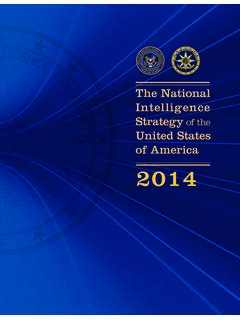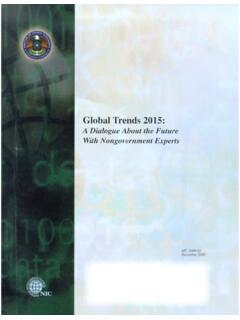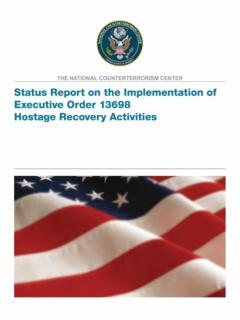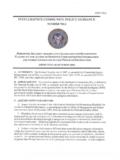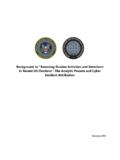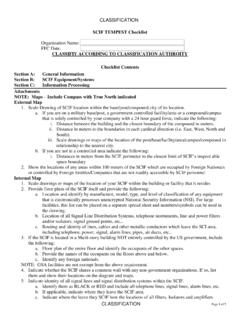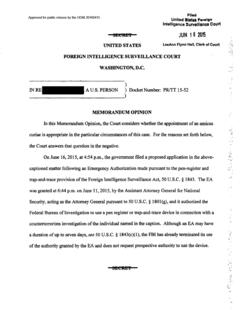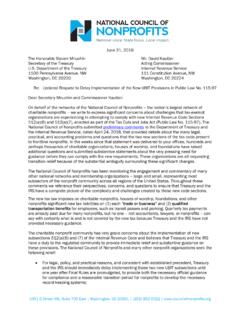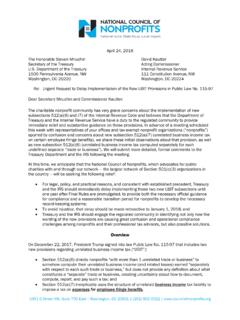Transcription of GLOBAL TRENDS PARADOX PROGRESS - dni.gov
1 PARADOX OFPROGRESSA publication of the national Intelligence CouncilGLOBAL TRENDSJANUARY 2017 NIC 2017-001 ISBN 978-0-16-093614-2To view electronic MAP OF THE FUTURETHE MAP OF THE FUTUREOur story of the future begins and ends with a PARADOX : The same GLOBAL TRENDS suggesting a dark and difficult near future, despite the PROGRESS of recent decades, also bear within them opportunities for choices that yield more hopeful, secure futures. In the pages to come, we use multiple time horizons to help explore the future from different perspectives, to illustrate the risks for sudden discontinuities and deep, slow-moving shifts, and to flag decision start with an exploration of Key TRENDS that are changing the GLOBAL landscape and illuminate today s PARADOX . We discuss as well how these TRENDS are Changing the Nature of Power, Governance, and Cooperation as a way to diagnose why and how GLOBAL dynamics have become more challenging in recent very different personal, political, and business choices, the current trajectory of TRENDS and power dynamics will play out in a Near-Future of Rising Tensions.
2 Vietnamese children walking home from gears, we explore trajectories for how the TRENDS could unfold over a 20-year horizon through Three Scenarios for the Distant Future: Islands, Orbits, and Communities. Each scenario identifies decision points that might lead to brighter or darker futures, and develops implications for foreign policy planning , we discuss the lessons these scenarios provide regarding potential opportunities and tradeoffs in creating the future, rather than just responding to the document, we have placed imagined headlines from the future to highlight the types of discontinuities that could emerge at any point from the convergence of key INTELLIGENCE COUNCILAsia Images / TRANSFORMING THE GLOBAL LANDSCAPE6 GLOBAL TRENDS : PARADOX OF PROGRESSG lobal TRENDS and Key Implications Through 2035 The rich are aging, the poor are not.
3 Working-age populations are shrinking in wealthy countries, China, and Russia but growing in developing, poorer countries, particularly in Africa and South Asia, increasing economic, employment, urbanization, and welfare pressures and spurring migration. Training and continuing education will be crucial in developed and developing countries GLOBAL economy is shifting. Weak economic growth will persist in the near term. Major economies will confront shrinking workforces and diminishing productivity gains while recovering from the 2008-09 financial crisis with high debt, weak demand, and doubts about globalization. China will attempt to shift to a consumer-driven economy from its longstanding export and investment focus. Lower growth will threaten poverty reduction in developing is accelerating PROGRESS but causing discontinuities.
4 Rapid technological advancements will increase the pace of change and create new opportunities but will aggravate divisions between winners and losers. Automation and artificial intelligence threaten to change industries faster than economies can adjust, potentially displacing workers and limiting the usual route for poor countries to develop. Biotechnologies such as genome editing will revolutionize medicine and other fields, while sharpening moral and Identities are driving a wave of exclusion. Growing GLOBAL connectivity amid weak growth will increase tensions within and between societies. Populism will increase on the right and the left, threatening liberalism. Some leaders will use nationalism to shore up control. Religious influence will be increasingly consequential and more authoritative than many governments.
5 Nearly all countries will see economic forces boost women s status and leadership roles, but backlash also will is getting harder. Publics will demand governments deliver security and prosperity, but flat revenues, distrust, polarization, and a growing list of emerging issues will hamper government performance. Technology will expand the range of players who can block or circumvent political action. Managing GLOBAL issues will become harder as actors multiply to include NGOs, corporations, and empowered individuals resulting in more ad hoc, fewer encompassing nature of conflict is changing. The risk of conflict will increase due to diverging interests among major powers, an expanding terror threat, continued instability in weak states, and the spread of lethal, disruptive technologies. Disrupting societies will become more common, with long-range precision weapons, cyber, and robotic systems to target infrastructure from afar, and more accessible technology to create weapons of mass change, environment, and health issues will demand attention.
6 A range of GLOBAL hazards pose imminent and longer-term threats that will require collective action to address even as cooperation becomes harder. More extreme weather, water and soil stress, and food insecurity will disrupt societies. Sea-level rise, ocean acidification, glacial melt, and pollution will change living patterns. Tensions over climate change will grow. Increased travel and poor health infrastructure will make infectious diseases harder to manage. The BottomlineThese TRENDS will converge at an unprecedented pace to make governing and cooperation harder and to change the nature of power fundamentally altering the GLOBAL landscape. Economic, technological and security TRENDS , especially, will expand the number of states, organizations, and individuals able to act in consequential ways. Within states, political order will remain elusive and tensions high until societies and governments renegotiate their expectations of one another.
7 Between states, the post-Cold War, unipolar moment has passed and the post-1945 rules based international order may be fading too. Some major powers and regional aggressors will seek to assert interests through force but will find results fleeting as they discover traditional, material forms of power less able to secure and sustain outcomes in a context of proliferating veto TRANSFORMING THE GLOBAL LANDSCAPEThe post-Cold War era is giving way to a new strategic context. Recent and future TRENDS will converge during the next 20 years at an unprecedented pace to increase the number and complexity of issues, with several, like cyber attacks, terrorism, or extreme weather, representing risks for imminent disruption. Demographic shifts will stress labor, welfare, and social stability. The rich world is aging while much of the poorer world is not and is becoming more male to boot.
8 More and more people are living in cities, some of which are increasingly vulnerable to sea-level rise, flooding, and storm surges. So, too, more people are on the move drawn by visions of a better life or driven by horrors of strife. Competition for good jobs has become GLOBAL , as technology, especially mass automation, disrupts labor markets. Technology will also further empower individuals and small groups, connecting people like never before. At the same time, values, nationalism, and religion will increasingly separate the national level, the gap between popular expectations and government performance will grow; indeed democracy itself can no longer be taken for granted. Internationally, the empowering of individuals and small groups will make it harder to organize collective action against major GLOBAL problems, like climate change.
9 International institutions will be visibly more mismatched to the tasks of the future, especially as they awkwardly embrace newly empowered private individuals and , the risk of conflict will grow. Warring will be less and less confined to the battlefield, and more aimed at disrupting societies using cyber weapons from afar or suicide terrorists from within. The silent, chronic threats of air pollution, water shortage, and climate change will become more noticeable, leading more often than in the past to clashes, as diagnoses of and measures to deal with these issues remain divisive around the African school students. Much of the growth in the world s working age population over the next several decades will come from Africa as well as South INTELLIGENCE COUNCILF ranco Lucato / , the number of people reaching working age during the coming two decades will decline sharply from the previous two from billion in 1995-2015 to 850 million in 2015-35, according to UN projections.
10 Most of these new workers, however, will be in South Asia and Africa, many of them in economies already struggling to create new jobs in the modern GLOBAL economy due to inadequate infrastructure, limited education systems, corruption, and lack of opportunity for women. Integrating more women into the workforce will be particularly challenging due to longstanding cultural norms, but a study by McKinsey GLOBAL Institute assesses that such moves could boost output and productivity. According to the study, GLOBAL GDP could rise by more than 10 percent by 2025 if roles and relative compensation for women across each region were improved to match the levels of the most-equitable country in that region. McKinsey highlighted improvements in education, financial and digital inclusion, legal protection, and compensation for care work as crucial to gains in gender economic equity and ultimately beneficial to all workers as People Are Living In Cities.
